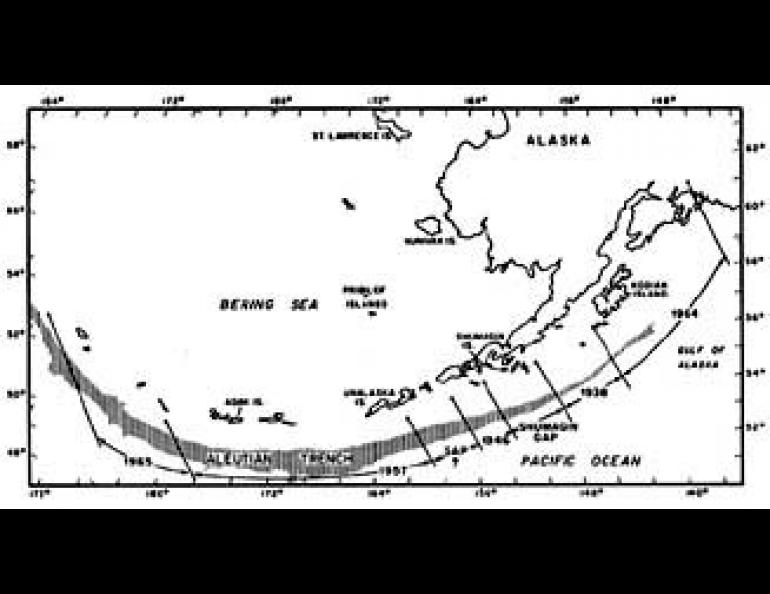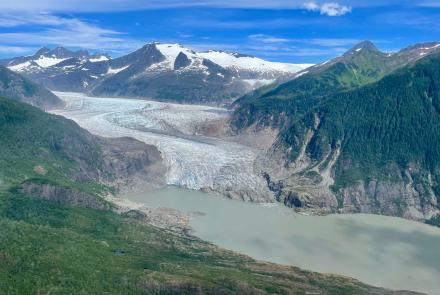
Shumagin Islands Likely Site for Next Major Earthquake
The Aleutian Islands and associated trench are products of the Pacific "plate" to the south being gradually forced beneath the North American plate in the Bering Sea. Many earthquakes result as a consequence, including some of the largest that have ever been recorded.
Typically, great earthquakes of magnitude 8.0 or more occur on an average of about 70 years' interval within different segments of the arc. During each of these large earthquakes, the accumulated strain is released along a certain length of the arc system, generally on the order of a few hundred miles (the 1964 Prince William Sound earthquake of magnitude 8.4 released strain along a total distance of over 400 miles, from near Valdez to south of Kodiak Island). It is believed that, over the years, the pattern of strain should fill in more-or-less uniformly along the entire system.
One segment of the arc that is arousing the concern of seismologists is in the area of the Shumagin Islands, off the tip of the Alaska Peninsula. The last great earthquake known to have occurred there (according to Russian records) was in 1848. This nagging seismic silence along a 200-mile-long zone very probably portends a strong earthquake there in the foreseeable future.
Klaus Jacob of Lamont-Doherty Geological Observatory at Columbia University has recently released some figures attempting at least an educated guess at when this earthquake might be expected (John Davies, now Alaska state seismologist, was an original co-worker with Jacob on the Shumagin project).
According to the figures presented by Jacob at a recent meeting in Baltimore, a great earthquake as large as magnitude 8.6 is likely in the next 20 years. The scientists on the Lamont-Doherty team claim that there is a 16 to 90 percent chance for a great quake in the next 10 years, and a 30 to 99 percent likelihood that it will strike in the next 20 years.
These figures are not predictions, but statistical probabilities based on the historical record, including accounts gathered by the Russians before they sold Alaska to the U.S. in 1867.
Because the Aleutians are so sparsely populated, the primary hazard to population centers would probably be from tsunamis, or seismic sea waves that could be damaging as far away as Hawaii. In Alaska, the primary concern should probably be for the damage to oil rigs as drilling progresses further to the south.




